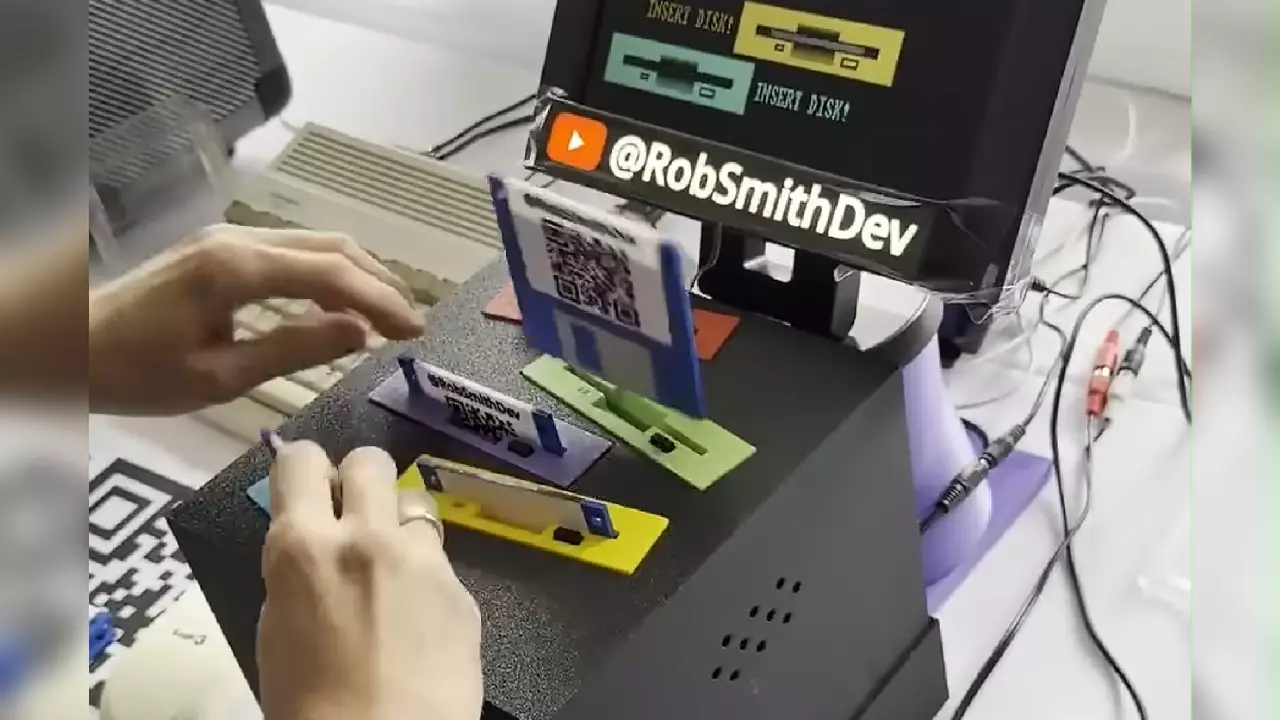In an era dominated by sleek, high-definition graphics and complex gameplay, reclaiming the essence of vintage technology requires a daring spirit. Enter DiskFight—a project that not only celebrates nostalgia but reinvents it through inventive engineering. The creator’s journey into designing a game that blends mechanical dexterity with digital flair is a testament to how passion for the past can fuel modern innovation. Unlike typical retro-inspired projects, DiskFight pushes boundaries by transforming the humble floppy disk, an icon of 80s and 90s computing, into an interactive game element. It exemplifies a deliberate effort to bridge generations, reminding us that even aged tech can serve as a canvas for creative experimentation.
What makes this project stand out is its audacious approach: converting an obsolete storage medium into an arcade-style challenge. This isn’t about nostalgia passively celebrated through emulators or basic replications; it’s about reintroducing physicality and tactile engagement into a digital age. The creator’s bold decision to develop custom linear actuators to autonomously handle floppy disks reveals an unmatched commitment to authenticity and ingenuity. These mechanically driven components add an engaging layer of unpredictability—disks are either pushed in with gentle force or ejected, mimicking the chaotic simplicity of classic gameplay with a tech-savvy twist.
Crafting a Playfully Chaotic Experience
The game’s design balances precision and randomness, ultimately producing a visually and cognitively stimulating experience. The concept of quickly swapping disks, timed with the music, immerses players into a frantic but intuitive contest of hand-eye coordination. This is no mere digital challenge; it involves real-world interaction, elevating its appeal both as a nostalgic homage and an engaging physical activity. The choice to craft a 3D-printed arcade-style case ensures the entire device is both functional and visually compelling, further elevating it beyond basic prototypes into a piece of art.
Crucially, the software underpinning DiskFight was programmed using AMOS, emphasizing an earnest connection to vintage programming languages that once powered the Amiga. The musical accompaniment, composed by Hoffman, complements the gameplay’s frenetic tempo with a dynamic drum and bass track titled Disk Menace. This musical partnership underscores a deliberate attempt to fuse audio and game mechanics, creating an immersive sensory experience that reverberates with the energy of retro gaming culture. The decision to generate the soundtrack via vintage devices and even Amiga DJ sets underscores the creator’s commitment to authenticity and technical prowess.
Reimagining Retro in a Modern Context
What truly makes DiskFight compelling is its role as a cultural artifact—a reimagining of how vintage technology can be revitalized through hands-on innovation. It challenges the passive consumption of retro media by offering an active, tactile engagement. The game’s design, with its simple yet chaotic mechanic of disk insertion and ejection, exemplifies how retro elements can be recontextualized into modern playful art.
Moreover, this project underscores a broader conversation: that retro tech, often dismissed as obsolete, retains untapped potential for creative reuse. It encourages engineers, artists, and gamers alike to see beyond nostalgia and consider how vintage hardware can serve as a foundation for experimental, thought-provoking projects. The fact that the game was set on an “easy mode” button hints at strategic design choices—making the challenge accessible yet engaging, a metaphor for how the old can serve as an entry point into deeper, more complex explorations of technology.
Ultimately, DiskFight epitomizes a fearless embrace of retro aesthetics fused with contemporary ingenuity. It’s not merely a machine; it’s a statement that innovation doesn’t have to always mean new technology—sometimes, the most captivating ideas emerge when we turn to the tech and culture of the past for inspiration. This project invites us to reconsider our relationship with vintage hardware, highlighting that with enough creativity, even the most familiar, outdated devices can be transformed into compelling works of interactive art.

